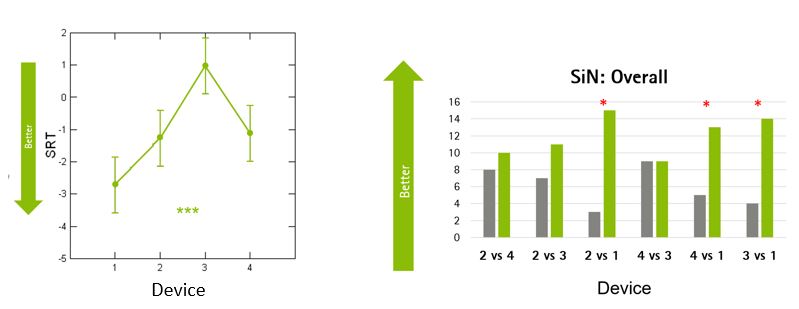
Knowledge is power and Naída delivers!
Audiologist David Crowhen explains how Naída M-SP delivers power to the people.
The phrase ‘knowledge is power’ is commonly attributed to Francis Bacon,1 and to me, really highlights the importance of having access to information to learn, develop knowledge and ultimately be empowered.
We acquire information through our senses, and when hearing loss is present, this reduces both the audibility and intelligibility of speech,2 potentially impacting on learning and knowledge acquisition. This is especially true for those with severe-to-profound (S2P) degrees of hearing loss because they have additional challenges compared to those with lower degrees of hearing loss.
Additional challenges with severe-to-profound hearing loss
It starts with audibility, a fundamental pre-requisite for all higher order processing of sound. For example, large amounts of gain are required, which creates a higher risk of acoustic feedback.2
Even if audibility through direct amplification can be achieved, outcomes can be varied3 (and can even be worse) due to a reduced inner hair cell population, the presence of cochlear dead regions, reduced dynamic range, distortion etc.
And it gets trickier because it’s the softer, higher frequency speech sounds (e.g., /s/) that are more important in spoken English for conveying meaning, and these are the most challenging to make audible. And to top it all off, sloping hearing loss, which affects higher frequencies more, is the most common audiometric profile.4
Another area of challenge for people with S2P hearing loss is speech understanding in noise, even in the near field, where the speaker is only 1-2m away.
Taking up the challenge
The Naída M-SP (Super-power) was designed to empower people with S2P hearing loss through delivering auditory information to support speech understanding, even in challenging situations.
Among its many features are SoundRecover2, Phonak’s second generation, non-linear frequency shifting algorithm that, based on the input stimulus, adapts it’s behavior to shift key, higher frequency speech information into lower frequency regions with better residual hearing.5
And in a world that some feel is becoming an increasingly noisy place, the Naída M-SP uses StereoZoom [in the Speech-in-loud-noise (SPILN) program] to help filter out more noise to support speech understanding in the near-field.
Best of the bunch
‘Packing punch’ with all these features, we wanted to see how the new Naída M-SP stacked up against competitor devices in these key challenge areas of high frequency audibility and hearing in noise. 20 experienced hearing aid users with S2P hearing loss were fitted with Naída M-SP as well as SP devices from 3 other manufacturers.
Results showed that the Naída M-SP delivered better detection and recognition of higher frequency speech sounds compared to the other devices.6 And better audibility coupled with StereoZoom within the SPILN program provided better hearing in noise and was rated top for reducing listening effort and for the overall preferred device for hearing speech in noise (Fig 1).

So the new Naída M-SP really does provide power to the people with S2P hearing loss, and through this power – can support learning, knowledge acquisition and quality of life.
To read the full study – please click here
References:
- Wikipedia. “Scientia potentia est”. Last modified October, 11, 2020. Retrieved from https://en.wikipedia.org/wiki/Scientia_potentia_est#:~:text=It%20is%20commonly%20attributed%20to,Bacon’s%20Meditationes%20Sacrae%20(1597), accessed November 3rd, 2020.
- Dillon, Harvey (2012). Hearing aids. Sydney : New York : Boomerang Press ; Thieme
- Souza P. (2009, January 19). Severe hearing loss—Recommendations for fitting amplification. Audiology Online, Retrieved from www.audiologyonline.com/articles/article_detail.asp?article_id=2181, accessed November 3rd, 2020.
- Margolis R.H., Saly, G.L. (2009). Distribution of hearing loss characteristics in a clinical population. Ear and Hearing; 29(4):524-32.
- Rehmann, J., Allegro Baumann, S., & Siddhartha Jha, S., (2016) SoundRecover2 – the first adaptive frequency compression algorithm: More audibility of high-frequency sounds. Phonak Insight. Retrieved from www.phonakpro.com/evidence, accessed November 3rd, 2020.
- Crowhen, D., Latzel, M., Lundbeck, M. (2020). Phonak Naída M-SP outperforms other SuperPower products in high frequency audibility and performance in noise. Phonak Field Study News. Retrieved from www.phonak.pro.com/evidence, accessed November 3rd, 2020.
